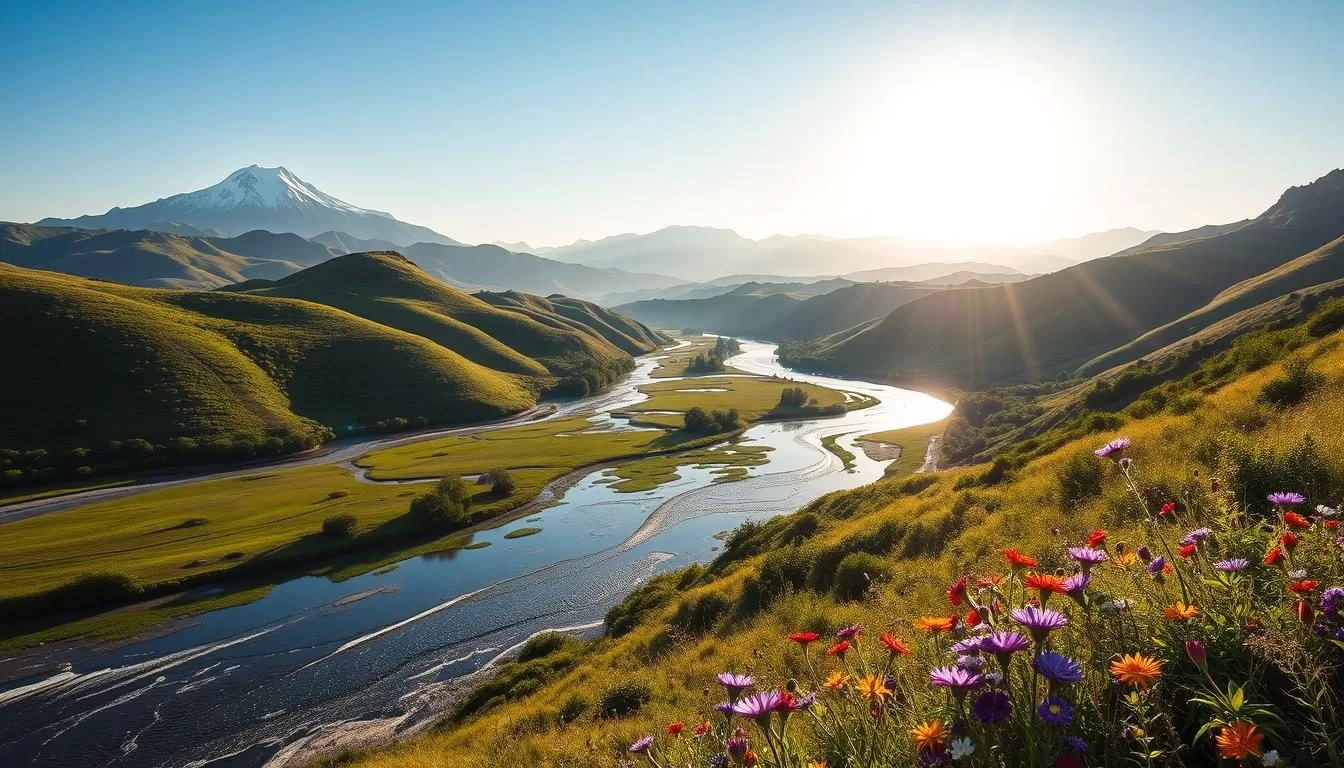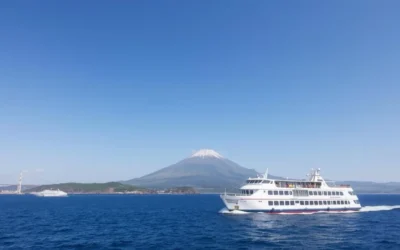✓ Accommodations✓ Flights✓ Rental Cars
Planning a trip to this region of Japan can be challenging if you’re unsure about the ideal time to visit. The area experiences distinct seasons that greatly impact the travel experience.
Understanding the local weather patterns is crucial for making the most out of your journey. By knowing what to expect, you can plan your travel itinerary around the seasonal attractions and cultural events.
Whether you’re looking forward to enjoying the cherry blossoms in spring or experiencing the serene snow-covered landscapes in winter, knowing the best time to visit is key. This guide will help you navigate the region’s climate to ensure a memorable trip.
Understanding Fukui Prefecture’s Climate
To make the most of your visit to Fukui Prefecture, it’s crucial to grasp the nuances of its climate, which is marked by distinct seasonal changes. The region’s weather is characterized by significant variations throughout the year, impacting the time you choose to visit.
Four Distinct Seasons
Fukui Prefecture experiences four distinct seasons, each with its unique characteristics. The temperatures vary significantly from one season to another, ranging from cold winters to warm summers. Understanding these seasonal changes is essential for planning your trip and making the most of your time in Fukui.
The region’s climate is influenced by its geographical location, with the weather patterns changing considerably across different months. This variation is a key factor in determining the best time to visit.
Weather Patterns Throughout the Year
The weather in Fukui Prefecture is marked by a wetter season that lasts for 8.6 months, from June 21 to March 9, with a greater than 44% chance of a given day being a wet day. The month with the most wet days is December, averaging 17.9 days with at least 0.04 inches of precipitation.
| Month | Average Wet Days |
|---|---|
| December | 17.9 |
| May | 10.0 |
The rainy season typically occurs from June to July, bringing increased precipitation and humidity. May tends to be the driest month, though it still averages about 10 days with some precipitation. Understanding these weather patterns will help you pack appropriately and plan activities that align with the conditions during your visit.
Spring in Fukui: Cherry Blossoms and Mild Weather
The arrival of spring in Fukui Prefecture heralds a season of breathtaking natural beauty. As the cold winter months dissipate, the landscape transforms into a vibrant tapestry of colors, with cherry blossoms being the main attraction.
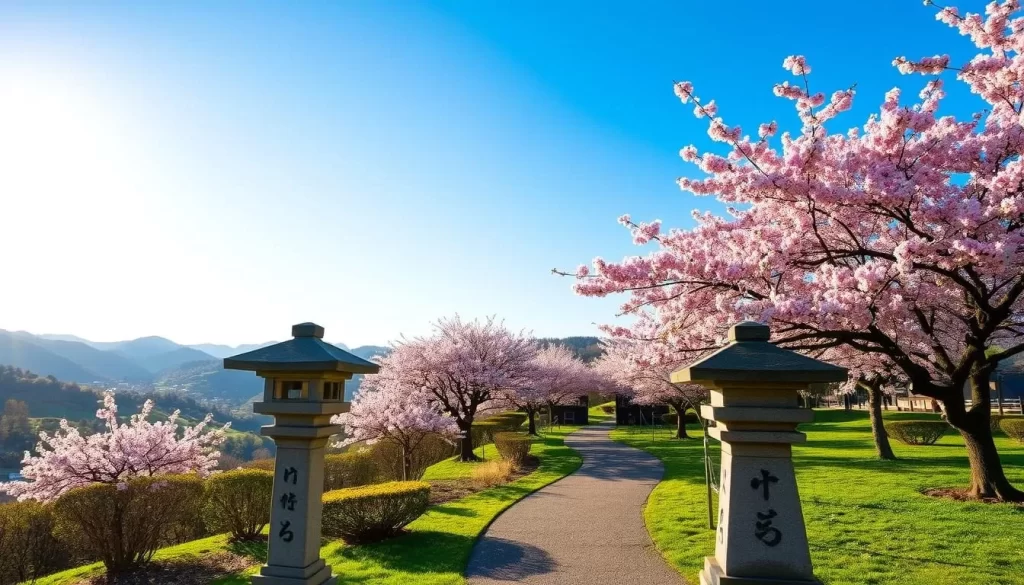
April to May: Temperature and Conditions
April and May are the best months to visit Fukui Prefecture, offering mild and pleasant weather conditions. During this period, the temperature is comfortable, making it ideal for outdoor activities such as exploring the local parks and gardens. The gentle spring breeze adds to the overall ambiance, creating a serene atmosphere that is perfect for enjoying the natural beauty of the prefecture.
The weather during these months is characterized by mild temperatures, with average highs ranging from 18°C to 23°C (64°F to 73°F). This comfortable climate allows visitors to fully appreciate the picturesque landscapes and participate in various cultural events and festivals that take place during this time.
Cherry Blossom Season Highlights
Fukui Prefecture is renowned for its stunning cherry blossom displays. The cherry blossom season typically begins in late March and peaks in early to mid-April. Here are some highlights of what you can experience during this time:
- Witness the breathtaking beauty of cherry trees in bloom across the prefecture.
- Enjoy hanami (flower viewing) in numerous parks, gardens, and along riverbanks.
- Explore historical sites and temples featuring cherry trees that create stunning photo opportunities.
- Participate in local festivals and special events that coincide with the cherry blossom season.
The ephemeral nature of the blossoms makes timing your visit crucial. The peak bloom period typically lasts only 1-2 weeks, so planning is essential to make the most of your trip.
Summer in Fukui: Navigating the Heat and Humidity
Visiting Fukui in the summer means experiencing a unique blend of warm weather and cultural events. As you plan your trip, understanding the climate and activities available during this time will help you make the most of your visit.
June to August: Temperature and Conditions
Summer in Fukui is marked by hot and humid weather, with temperatures often reaching their peak in July and August. The average high temperature during these months is around 30°C (86°F), making it perfect for water activities and beach visits. You can expect a refreshing breeze along the coastline, which provides some relief from the inland heat.
Rainy Season Considerations (June-July)
Fukui experiences a rainy season during June and July, which is a crucial factor to consider when planning your trip. While the rain can be a welcome respite from the heat, it’s essential to be prepared for potential downpours. The rainy season also brings lush greenery to the area, making it a beautiful time to explore Fukui’s natural landscapes.
Beach Activities and Water Sports
The summer months offer a wide range of beach activities and water sports in Fukui. Popular destinations like Tojinbo, Mikuni, and the beaches of Wakasa Bay become lively hubs during July and August. You can enjoy swimming, sunbathing, kayaking, paddleboarding, and fishing, among other activities. The water temperature is most comfortable for swimming from mid-July through August, reaching the mid-70s°F.
| Activity | Location | Best Time |
|---|---|---|
| Swimming | Tojinbo, Mikuni, Wakasa Bay | Mid-July to August |
| Kayaking | Wakasa Bay, Rivers | June to August |
| Paddleboarding | Mikuni, Wakasa Bay | July to August |
As you enjoy the hot and humid summer weather in Fukui, don’t forget to explore the various cultural events and festivals that take place during this time. The combination of natural beauty and cultural experiences makes summer a unique and exciting time to visit Fukui.
Autumn in Fukui: Colorful Foliage and Comfortable Temperatures
Autumn in Fukui is characterized by its picturesque landscapes and comfortable temperatures, making it an ideal time to visit. As the summer heat fades, the prefecture transforms into a vibrant tapestry of autumn colors, creating a perfect backdrop for outdoor activities and sightseeing.
September to November: Temperature and Conditions
From September to November, Fukui experiences a gradual cooling, with October and November being particularly pleasant. The temperatures are mild, making it an excellent time of year for hiking, walking, and exploring historical sites. You’ll enjoy the beautiful autumn leaves against the backdrop of Fukui’s natural beauty and cultural landmarks.
The autumn season in Fukui is marked by comfortable temperatures, ranging from cool mornings to mild afternoons, ideal for outdoor exploration.
Best Spots for Autumn Foliage
Fukui Prefecture is dotted with numerous places that showcase spectacular autumn foliage. Some of the top recommendations include:
- Mountain areas like Echizen-Ono and the slopes of Mt. Hino, offering panoramic views of the autumn colors.
- Historical sites such as Eiheiji Temple, which becomes even more magical when surrounded by the red and gold hues of autumn leaves.
- The Japanese maple trees are particularly stunning, creating dramatic contrasts against temple architecture.
- Gardens and parks throughout the prefecture, some of which offer special evening illuminations, enhancing the autumn experience.
- Riverside walks along the Kuzuryu River and other waterways, where the colorful foliage is reflected, doubling the visual impact of the autumn scenery.

Visiting Fukui during the autumn season allows you to enjoy the area’s natural beauty, cultural heritage, and outdoor activities in a comfortable climate. Whether you’re interested in nature, history, or simply enjoying the local scenery, Fukui in autumn has something to offer.
Winter in Fukui: Snow, Hot Springs, and Winter Sports
Winter brings a unique charm to Fukui Prefecture, with its snow-covered landscapes and warm hot springs. This season, which spans from December to February, offers a range of activities and attractions that cater to different interests.
December to February: Temperature and Conditions
During the winter months, Fukui Prefecture experiences cold temperatures, with snowfall being a significant characteristic of this period. The average temperatures range from 2°C to 10°C (36°F to 50°F), making it ideal for snow sports.
The snowfall in Fukui is considerable, creating perfect conditions for skiing, snowboarding, and other winter sports. The region’s ski resorts, such as Ski Jam Katsuyama, are popular destinations during this time.
| Month | Average Temperature (°C) | Average Snowfall (cm) |
|---|---|---|
| December | 5 | 100 |
| January | 3 | 150 |
| February | 4 | 120 |
Winter Activities and Attractions
Fukui Prefecture offers a variety of winter activities and attractions. You can enjoy winter sports at several ski resorts, with Ski Jam Katsuyama being the most prominent. The powdery snow conditions are perfect for skiing, snowboarding, and snowshoeing from December through early March.
After a day in the cold, you can relax at one of the many hot springs (onsen), which become particularly appealing during winter. Additionally, winter illumination events light up various locations throughout the prefecture, creating magical nighttime experiences.
- Enjoy skiing and snowboarding at Ski Jam Katsuyama or other local ski resorts.
- Explore the prefecture’s winter illumination events.
- Relax at a hot spring (onsen) after a day of winter activities.
- Savor local winter specialties like crab, a Fukui delicacy.
Fukui Prefecture, Japan: Best Months for a Weather-Savvy Trip
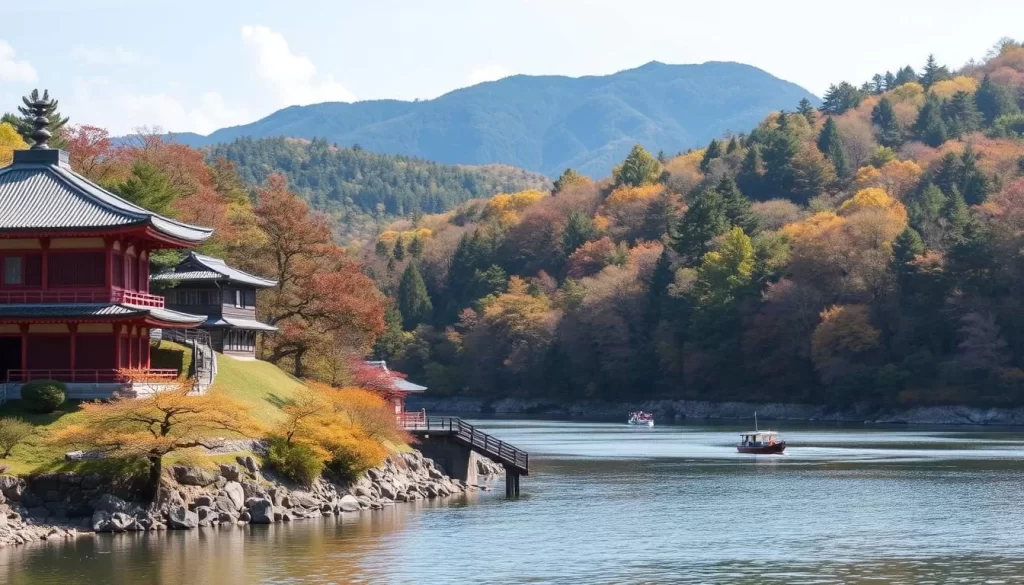
To make the most of your trip to Fukui Prefecture, it’s essential to know the best months to visit. The prefecture’s climate varies significantly throughout the year, making some periods more ideal than others for certain activities.
April-May: Optimal Spring Experience
Spring is a wonderful time to visit Fukui Prefecture, with mild temperatures and the breathtaking beauty of cherry blossoms. During April and May, the weather is pleasant, making it ideal for outdoor activities such as hiking and sightseeing. You’ll experience comfortable temperatures, ranging from 50°F to 70°F, perfect for exploring historical sites and enjoying nature.
Key Highlights of Spring:
– Cherry blossoms create a picturesque landscape.
– Mild temperatures facilitate outdoor exploration.
– Cultural festivals and events start to take place.
October-November: Perfect Autumn Visit
Autumn is another excellent season to visit Fukui Prefecture. October and November bring comfortable temperatures and stunning autumn foliage. The landscapes transform into vibrant hues of red, orange, and yellow, creating a perfect backdrop for hiking, photography, and other outdoor activities. You’ll enjoy the clear skies, comfortable daytime temperatures, and the festive atmosphere of harvest season.
Autumn Attractions:
– Vibrant autumn foliage.
– Comfortable temperatures for outdoor activities.
– Harvest festivals and local culinary experiences.
Cultural Festivals and Events by Season
As the seasons change in Fukui, the prefecture comes alive with a variety of cultural festivals and events. These happenings are deeply rooted in the local culture and offer a unique glimpse into the heritage of the area.
Traditional Festivals Worth Planning Around
Fukui Prefecture is home to numerous festivals that take place throughout the year. You can experience the vibrant matsuri (festivals) that showcase traditional dance shows and music gigs, bringing the heart of Fukui’s heritage alive with bold colors, joyful sounds, and unique tastes.
Seasonal Cultural Experiences
Beyond the major festivals, each season in Fukui offers unique cultural experiences. For instance, spring brings tea ceremonies celebrating the new harvest of green tea. Summer features outdoor performances of traditional music and dance. Autumn is marked by moon-viewing parties (tsukimi), while winter offers traditional craft workshops where you can learn techniques passed down through generations.
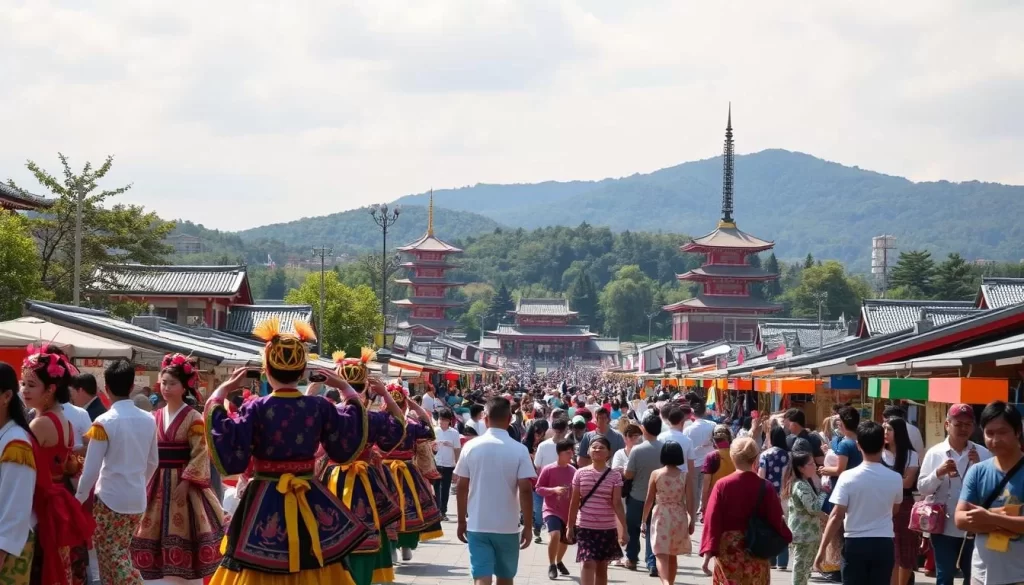
These experiences allow you to engage with the local culture at different times of the year, making your visit to Fukui a memorable one.
Natural Attractions and Outdoor Activities
With its varied landscapes, Fukui Prefecture provides numerous opportunities for outdoor adventures and nature appreciation. You can explore the region’s diverse natural beauty through various activities and attractions.
Coastal Explorations
Fukui’s coastline offers a unique blend of scenic beauty and outdoor activities. You can enjoy exploring the coastal areas, which provide a serene environment for relaxation and adventure. The coastline is perfect for activities like hiking and exploring tidal pools.
Mountain Adventures
The mountainous areas of Fukui are ideal for hiking, trekking, and other adventure sports. You can explore the beautiful trails, enjoy the scenic views, and experience the thrill of mountain adventures. The mountains offer a great way to connect with nature and challenge yourself physically.
Lakes and Rivers
Fukui Prefecture is also known for its many lakes and rivers, perfect for enjoying nature. You can spend a day fishing, boating, or paddling in this idyllic environment. Many of the lakes have beaches and spots for a picnic, making them ideal for a day off. The rivers are great for more adventurous activities, like rafting, allowing you to see the area’s natural beauty from a new angle.
Some of the key activities you can enjoy in Fukui’s lakes and rivers include boating, fishing, and shoreline hiking at Lake Kuzuryu, which is particularly stunning during autumn foliage. The Kuzuryu River offers rafting and kayaking opportunities, with guided tours available for beginners. Fishing is also popular, with different species available seasonally.
Practical Travel Tips for Fukui Prefecture
To make the most of your trip to Fukui Prefecture, it’s essential to be prepared with practical travel tips. Understanding the local transportation, where to stay, and cultural norms can greatly enhance your travel experience.
Transportation Options
Fukui Prefecture is well-connected by train, bus, and car. The JR West railway line and the Hokuriku Shinkansen provide easy access to major cities. For local travel, buses and rental cars are convenient options. You can also rent bicycles in some areas, offering a leisurely way to explore.
| Mode | Coverage | Convenience |
|---|---|---|
| Train | Major cities and towns | High |
| Bus | Local areas and rural regions | Medium |
| Car Rental | Wide coverage, including rural areas | High |
Accommodation Recommendations
Fukui offers a range of accommodations from traditional ryokans to modern hotels. Staying in a ryokan can add significant value to your trip, offering a unique cultural experience. Booking in advance is recommended, especially during peak travel seasons.
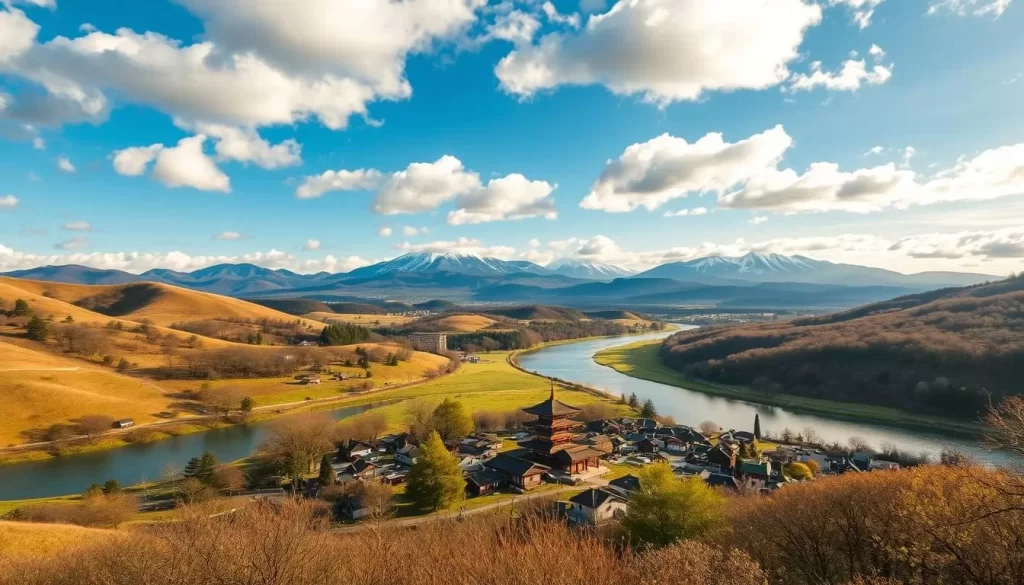
Language and Cultural Etiquette
While many locals appreciate basic Japanese phrases, people in the tourism industry often speak some English. However, having a translation app or pocket dictionary can be helpful. Cultural etiquette is crucial; for example, removing shoes before entering homes or traditional restaurants is a sign of respect. Understanding these customs will enrich your experience and interactions with the local world around you.
Packing Guide for Different Seasons
The key to a comfortable trip to Fukui Prefecture lies in packing the right clothing for the season. Understanding the weather conditions during your visit will help you prepare appropriately.
Essential Items Year-Round
Regardless of the season, there are a few essentials you should always include in your packing list. Sun protection is crucial, as is a reusable water bottle to stay hydrated while exploring. Comfortable walking shoes are also a must, given the variety of outdoor activities available.
Seasonal Packing Lists
To make the most of your trip, adjust your packing list according to the season:
- Spring (March-May): Pack layers, including light sweaters and a light jacket, to adjust to varying temperatures. Consider an umbrella or light rain jacket for spring showers, and allergy medications if you’re sensitive to pollen during cherry blossom season.
- Summer (June-August): Include lightweight, breathable clothing, a hat for sun protection, and a light rain jacket for the rainy season. Quick-dry fabrics are ideal for the humid weather. Don’t forget swimwear if you plan to visit beaches or lakes.
- Autumn (September-November): Similar to spring, pack layers for changing temperatures. A light to medium jacket is essential, especially for morning and evening outings.
- Winter (December-February): Pack a warm coat, gloves, hat, scarf, and thermal layers. Waterproof footwear is recommended for exploring snowy areas, and hand warmers can be useful for extended outdoor activities.
Conclusion
As you plan your trip to Fukui Prefecture, understanding the seasonal weather will enhance your travel experience. The prefecture offers a diverse range of activities and sights throughout the year. Whether you’re interested in the cherry blossoms of spring or the autumn foliage, timing your trip according to the season is crucial.
By considering the weather and aligning your visit with the best time to enjoy specific activities, you’ll create a memorable journey. With good transportation options and a variety of accommodations, you’re all set for a smooth trip.
The above is subject to change.
Check back often to TRAVEL.COM for the latest travel tips and deals.
